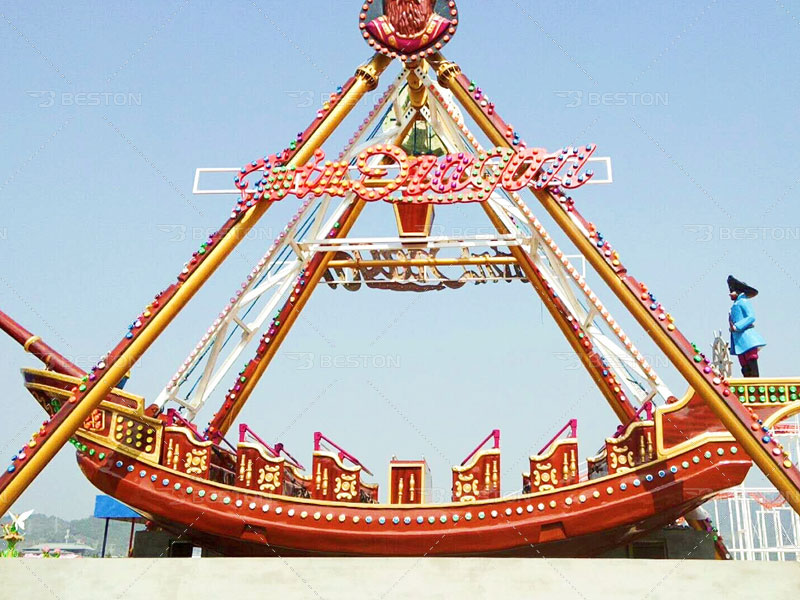The amusement ride industry thrives on precision, safety, and reliability. Every mechanical component, from the structural frame to the control system, undergoes meticulous testing before a ride ever welcomes its first passengers. Testing and trial operation represent the final—and arguably most critical—phase in the manufacturing and installation cycle of any attraction. These processes ensure that each ride meets both regulatory standards and the manufacturer’s internal quality benchmarks, safeguarding operational stability and rider safety under all foreseeable conditions.
1. The Foundation of Ride Verification
Before any physical testing begins, a rigorous documentation phase takes place. Engineers prepare a detailed testing protocol, referencing applicable standards such as ASTM F2291, EN 13814, and local inspection regulations. The protocol outlines mechanical load limits, electrical safety parameters, dynamic performance metrics, and emergency response procedures.
A pre-test inspection follows, where each subsystem—drive motor, hydraulic actuator, restraint mechanism, and electrical circuit—is checked for conformity. Bolted joints are torque-tested, weld seams undergo non-destructive examination, and sensor calibration is validated. Only after every checklist item is verified does the dynamic testing phase commence.
2. Static and Dynamic Load Testing
Static load testing evaluates a ride’s ability to withstand structural stress under maximum passenger load. Weighted dummies are often used to simulate riders, ensuring even weight distribution across seating arrangements. For example, on a pirate ship kiddie ride, engineers will load the vessel incrementally to measure deflection at various swing amplitudes. Sensors record real-time stress and displacement data, confirming that forces remain within permissible limits.
 Dynamic testing, by contrast, introduces motion. This phase observes how mechanical and electronic systems interact under operational conditions. Drive chains, bearings, and control circuits are monitored continuously. Acceleration, braking, and inertia transitions are analyzed using digital diagnostic tools, often employing high-speed data acquisition systems to detect minute anomalies invisible to the human eye.
Dynamic testing, by contrast, introduces motion. This phase observes how mechanical and electronic systems interact under operational conditions. Drive chains, bearings, and control circuits are monitored continuously. Acceleration, braking, and inertia transitions are analyzed using digital diagnostic tools, often employing high-speed data acquisition systems to detect minute anomalies invisible to the human eye.
3. Control System Calibration and Fail-Safe Evaluation
Modern amusement rides integrate complex programmable logic controllers (PLCs) that govern motion sequences, speed regulation, and safety interlocks. During calibration, each input and output module is tested for response accuracy and synchronization. Emergency stop circuits and redundant relays are triggered to confirm that fail-safe mechanisms activate instantaneously under simulated fault conditions.
On installations such as a crazy mouse coaster, the testing of sensor-based anti-collision systems is especially critical. Each car’s onboard control unit communicates continuously with the main PLC to prevent spacing errors along the track. The calibration ensures smooth transitions, consistent braking force, and synchronized lift operations throughout the entire circuit.

4. Power, Hydraulic, and Pneumatic System Validation
The energy systems driving amusement rides demand precise regulation. Hydraulic cylinders, pneumatic actuators, and variable frequency drives (VFDs) are subjected to extensive endurance testing. Pressure stability, leakage rates, and response times are recorded over multiple cycles. The goal is to verify that all systems maintain consistent performance under prolonged stress.
Thermal imaging cameras are sometimes employed during these tests to identify hotspots in electrical enclosures or friction zones. Lubrication quality and cooling efficiency are assessed to ensure long-term reliability, particularly in rides exposed to high duty cycles or variable weather conditions.
5. Trial Operation: The Human Factor
Once mechanical validation concludes, the focus shifts to trial operation—a phase that integrates human interaction with the system’s automated framework. Operators conduct supervised runs with empty seats, then with test personnel under controlled conditions. Each trial simulates a full operational day, including startup, shutdown, and emergency recovery sequences.
For smaller attractions like the pirate ship kiddie ride, this stage also tests passenger loading times, restraint usability, and comfort evaluation. Observers document vibration intensity, ride smoothness, and audible noise levels, which contribute not only to safety but also to user experience optimization.
In contrast, a complex coaster such as the crazy mouse coaster demands synchronized coordination between lift chains, switch tracks, and braking zones. Multiple full-cycle operations are executed to confirm stability during high throughput conditions. Data from onboard sensors and telemetry systems are analyzed post-run to identify any deviation from nominal parameters.
6. Safety Certification and Documentation
Upon successful completion of testing and trial operations, comprehensive documentation is prepared. This includes testing records, calibration certificates, maintenance guidelines, and operator training manuals. Independent inspectors or national safety authorities review the reports to issue the final operation permit.
These certifications are not mere formalities—they serve as the legal and technical foundation for public operation. They validate that each subsystem has performed to specification and that emergency redundancies function reliably.
7. Continuous Monitoring and Post-Commissioning Assessment
Even after commissioning, testing never truly ends. Many modern amusement rides incorporate remote monitoring systems capable of tracking vibration signatures, rotational speed, and control logic status in real time. Predictive maintenance algorithms analyze this data to detect potential mechanical fatigue or electronic drift before failure occurs.
Routine inspections are scheduled at defined intervals, supported by sensor feedback. This integration of continuous data-driven monitoring ensures that the operational integrity established during testing persists throughout the ride’s lifespan.
8. The Precision Mindset
Testing and trial operation represent far more than regulatory compliance—they embody the engineering philosophy of precision and accountability. Each validated measurement, each controlled cycle, reaffirms the manufacturer’s commitment to delivering rides that are not only thrilling but also mechanically sound and predictably safe.
Whether it’s the sweeping arc of a pirate ship kiddie ride or the twisting track of a crazy mouse coaster, every successful test sequence signifies the culmination of thousands of engineering decisions working in harmony. Through disciplined methodology and data-informed validation, the amusement ride industry sustains its most essential promise: that exhilaration should always coexist with safety.
Comments
No comments yet. Be the first to react!